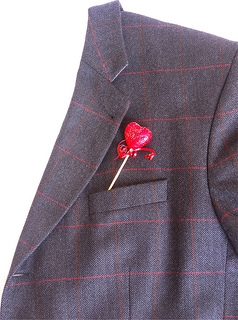How do I know if my gums are receding?
March 2nd, 2022

Gum recession, a common result of gum disease, occurs when the gum tissue that surrounds the teeth wears away or pulls back, forming pockets between the gumline and exposing more of the tooth. Gum recession occurs gradually, so you might not know that you have it. Left untreated, gum recession can result in tooth loss. In addition, there are several studies that suggest that gum disease is associated with modest increases in coronary heart disease. Here are five ways to know if your gums are receding.
1. Healthy gums are firm, light pink, and very elastic. If your gums don’t fit that description, then it’s time to visit our Anthem office. Red, swollen gums are a common symptom of gum disease, and may lead to gum recession.
2. Do your gums bleed easily when you brush or floss? If you have gum recession, even if you brush gently and with toothpaste specifically designed for sensitivity, it may still result in bleeding.
3. When you look in the mirror, do you see more of a tooth than you used to? This is one of the easiest ways to tell if you have gum recession. When gums recede, more of the tooth is visibly exposed. Look for lines or notches along the bottom of the teeth, as this typically indicates areas where the gums have receded.
4. One of the first signs of gum recession is tooth sensitivity. Does it hurt when you bite down or chew? The more gums recede, the more painful it is going to be. However, before you experience tooth sensitivity or pain, you may notice awkwardness when you bit down. When gum recession occurs, teeth can shift slightly, making it feel as if they are not properly aligned.
5. Loose teeth are a symptom of advanced gum recession and periodontal disease. In other words, the supporting bone structure of the teeth has already begun to deteriorate. If left untreated, it will result in tooth loss.
From deep cleaning (scaling) to gingival tissue grafting surgery, there are several ways to combat gum recession and periodontal disease. How gum recession is treated depends on how far advanced it is. Talk to Drs. Peter Vogel, Vijal Vadecha about what options are best for you.
Ease up on your gums — don’t brush your teeth too hard!
February 23rd, 2022

A lot of patients go at their teeth like they were sanding an old floor—that is to say, way too hard! Brushing too hard is probably the most common mistake patients make in their oral care routine, and it can be detrimental to the gums and teeth.
What can brushing too hard cause?
- Receding gums
- Bone loss around teeth
- Loss of teeth
- Tooth sensitivity, especially to hot and cold
- Worn down enamel
Brushing too hard wears away at your gums, which can lead to the neck of the teeth being exposed. This part of the tooth isn't covered by hard enamel like the rest of the tooth and hence the soft inner layer, or dentin, is exposed. Dentin is very sensitive to hot and cold and much more susceptible to bacterial decay. Once the gums recede due to improper brushing, it’s usually irreversible.
How to brush your teeth properly
You know you're supposed to brush your teeth twice a day, so why not do it right? First and foremost, you should only ever brush with a soft bristled brush—not medium or hard—unless directed otherwise by Drs. Peter Vogel, Vijal Vadecha. Unless you have braces or specific oral health issues, brushing twice a day for two minutes is usually plenty.
The main purpose of brushing is to remove plaque from your teeth and gums. Plaque is actually soft and is a buildup of bacteria, saliva, and food debris. You really don't need to brush hard to remove it, just make sure you aim your toothbrush at the gum line (where plaque grows) and brush in small circular motions, never a back-and-forth motion.
It's also wise to hold your toothbrush gently. People tend to brush harder the tighter they hold their toothbrush.
Still have questions about proper tooth brushing technique or gum health? Ask any staff member or Drs. Peter Vogel, Vijal Vadecha during your next visit to our Anthem office; we'd be happy to help!
What is a crown?
February 16th, 2022

If you have never had a crown before, you might be wondering why crown treatment is best, what the procedure involves, and which type of crown to choose. Let’s get down to the basics of crowns!
A crown is the best way to treat many dental conditions, either to strengthen and save the tooth or to improve its appearance. We might suggest a crown if you have any of the following conditions:
- A filling that needs to be replaced, without enough tooth structure left to fill properly
- A tooth that is fractured or broken, or so weak that it might fracture
- A recent root canal
- An implant
- A bridge which needs a crown to serve as the base for attachment
- A tooth that is discolored or irregularly shaped
On your first visit to our Anthem office, Drs. Peter Vogel, Vijal Vadecha will prepare the tooth that will be receiving a crown. A tooth might have to be built up if there isn’t enough of the original tooth left, or the top and sides of the tooth will be shaped down so that the crown fits smoothly and evenly with your other teeth. An impression will be made and sent to a dental lab so that a crown with the perfect fit for your tooth and mouth can be created. A temporary crown will be put in place to protect your tooth while the final crown is fabricated.
The permanent crown is a cap which covers your tooth. It can be made of various materials, which all offer different advantages:
- Metal Crowns—made of gold, platinum or base metal alloys, these are the longest lasting. Because of their metallic color, they are often chosen for back molars where they are less visible.
- Porcelain Over Metal—because the color of the porcelain is matched to your natural teeth, these crowns look very realistic. Porcelain is more fragile than metal, so there is the possibility that they won’t be as durable.
- Resin—less expensive than other options, but these crowns are more fragile and do not wear as well.
- All Porcelain/All Ceramic—the most realistic looking option, especially for front teeth, and also suitable for anyone with a metal allergy. They are, again, not as strong as metal crowns, and can be subject to damage.
- Stainless Steel—often used for baby teeth or as a temporary crown for adult teeth.
We’ll discuss your options and help you decide on the best type of crown for you. When the crown is finished at the dental lab, you will have one more visit where the crown will be secured in place. We will make sure your bite is comfortable and the color and appearance of the crown are satisfactory. We will also give you instructions for the next few days following the procedure, and can make adjustments if needed.
A crown is a perfect example of form and function working together: a crown maintains the beauty of your smile and preserves the health of your tooth. If you need a crown, we will be happy to talk to you about your best options for a strong, long-lasting, and natural smile.
The Transformation of Valentine's Day
February 9th, 2022

Did you know the actions leading to the beginnings of Valentine's Day were actually centered on the avoidance of war? A Catholic priest named Valentine defied the orders of the Emperor Claudius II and secretly married young men and their brides after the emperor had declared it illegal because only single, young men could be sent to war. Rather than lose potential soldiers to fight his war, Claudius attempted to hoard them by proclaiming marriage illegal.
Valentine continued to marry young couples anyway and, eventually, was put to death for it in 270 AD. Before his death, he sent a letter to a secret love and signed it “From your Valentine”. Nearly 1,800 years later, people are still signing letters and cards in this manner. This year, carry on the tradition started long ago, while adding your own twist. Here are a few suggestions.
Simple and Creative Valentine's Day Ideas
- Memorialize it with a Photo. Couples often have photos taken around Christmas, but Valentine's Day photos allow you to capitalize on romance. Famous couple Julia Child and her husband, Paul, had their picture taken together every Valentine's Day and included their sense of humor with silly props.
- Return to Your First Date Location. Even if your first date together was at a local hotdog stand, its sentimental value can make it a fun part of your Valentine's Day agenda. Be creative and make a treasure hunt with clues that lead your partner to the original date location, where you can express your love with flowers or a gift.
- “From Your Valentine” Messages. Deliver your message in a creative way to make this Valentine's Day stand out from the others. Bake your partner's favorite treat and write a message on it with a tube of icing, or draw a note on the steamed up mirror so it shows up when your partner takes a shower.
Although Valentine's Day is a day to celebrate love, it doesn't have to be a special day only for couples. If you're single, use this special day to shower yourself with love, because you're worth it! After all, the priest Valentine believed so strongly in the sanctity of love that he was willing to risk his life for it. Whether you're in a relationship or single, young or old, romantic or not, Valentine's Day is for you. Happy Valentine’s Day from the dental office of Drs. Peter Vogel, Vijal Vadecha.


